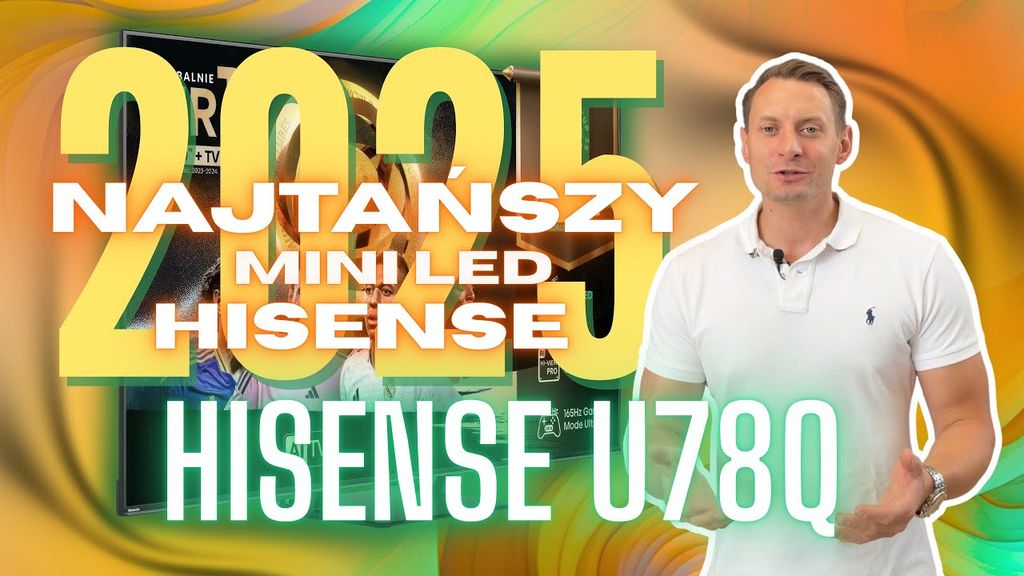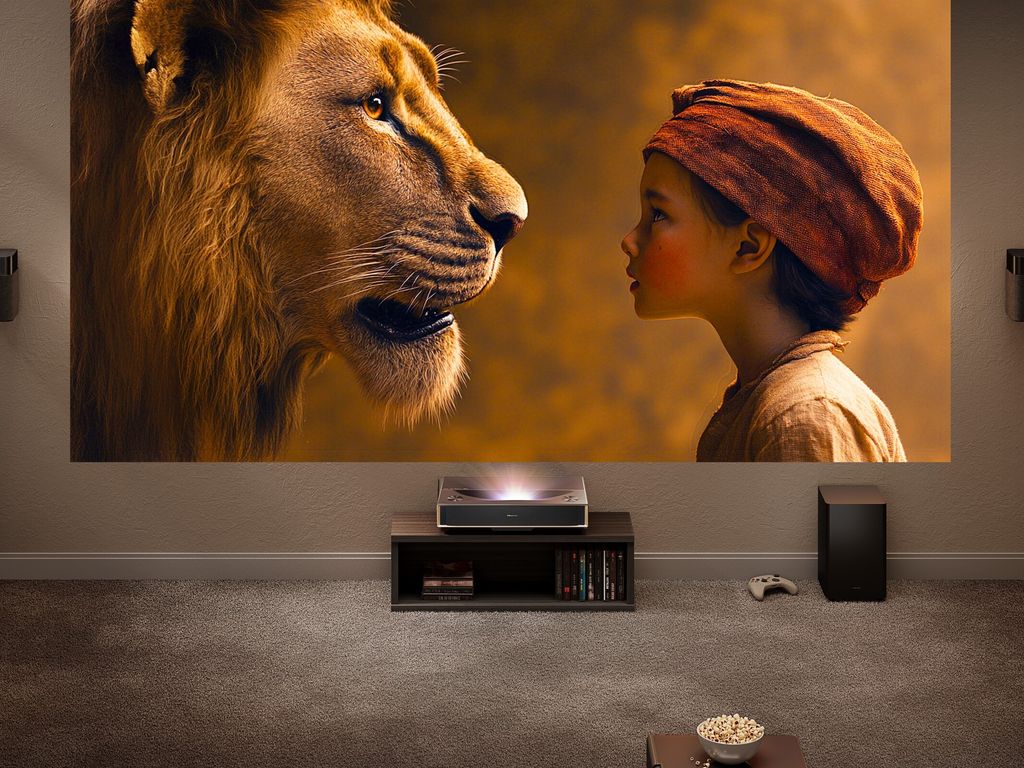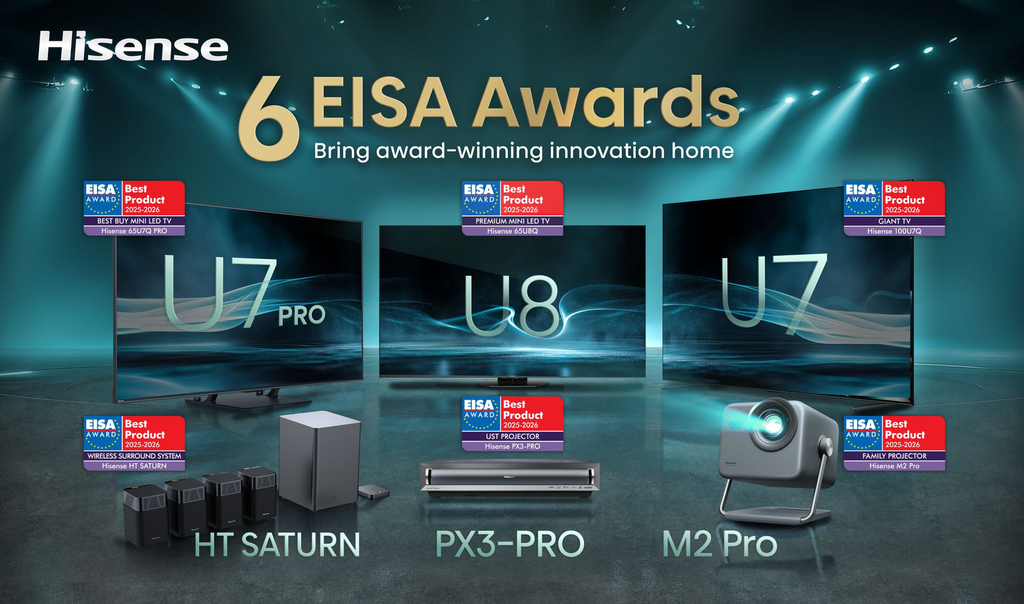- Matching (Score)
- Our verdict
- Competing TVs
- TV appearance
- Where to buy
- Contrast and black detail
- HDR effect quality
- Factory color reproduction
- Color reproduction after calibration
- Smoothness of tonal transitions
- Image scaling and smoothness of tonal transitions
- Blur and motion smoothness
- Console compatibility and gaming features
- Input lag
- Compatibility with PC
- Viewing angles
- Daytime performance
- TV features
- Apps
- Playing files from USB
- Sound
- Panel details
Hisense U7KQ Review
Available screen sizes:

Complete the survey to find out the result
Panel type: LCD VA Refresh rate: 240Hz Brand: HISENSE Resolution: 3840x2160 System: VIDAA Model year: 2023
HISENSE 100U7KQ - Our verdict
7.5
Overall rating
The Hisense U7KQ in its 100" variant is a significantly better option than smaller diagonal models. The proprietary VIDAA system offers an interface similar to platforms like Google TV, running quickly and efficiently without freezing or major errors however, the built-in file player occasionally faces operational difficulties. It is worth noting that not all apps were available at the time of review, so checking app compatibility is recommended.
The TV's feature set is extensive, and most tested functions performed as expected. The panel's high brightness is a strong point during daytime use, making it suitable even for heavily sunlit living rooms. In cinematic settings, the VA panel, supported by multiple dimming zones, delivers good blacks. It handles low-quality content, such as SD channels or DVDs, reasonably well, though the absence of a function to reduce posterization (visible colour transitions) is a minor drawback.
The experience improves significantly with 4K HDR movies, where the TV showcases a wide colour palette and strong lighting effects. Dolby Vision and Dolby Atmos support is a bonus, though the built-in speakers are average. Sports fans will appreciate the 120Hz panel with effective motion smoothing, while gamers benefit from low input lag for console gaming. Motion blur is moderate, with only occasional "trails" during fast motion against dark backgrounds.
However, the lack of HGiG mode somewhat reduces HDR game quality, and the absence of a local dimming function in VRR mode limits the usefulness of this feature. Overall, the TV offers good picture quality for its price range, free from major flaws or standout advantages, while its large size remains its most prominent appeal.
Advantages
Very good black
High brightness of the matrix
Stable and fast-acting system
Very good price-to-quality ratio in the 100" variant
Disadvantages
Lack of important applications for the Polish audience (Player, Spotify)
Poor HDR effect in dark scenes with small light sources
Average viewing angles
Movies and series in UHD quality
7.5
Classic TV, YouTube
7.3
Sports broadcasts (TV and apps)
6.6
Gaming on console
8.2
TV as a computer monitor
8.0
Watching in bright light
7.8
Utility functions
8.2
Apps
7.7
Sound quality
6.9
Complete the survey to find out what fits your preferences
HISENSE 100U7KQ - Competing TVs in this price range
HISENSE 100U7KQ - TV appearance
HDMI inputs: 2 x HDMI 2.0, 2 x HDMI 2.1 (48Gbps) Other inputs: RCA (Chinch) Outputs: Toslink (Optical audio), eARC (HDMI), ARC (HDMI), Mini-Jack (Headphones) Network Interfaces: Wi-Fi 2.4GHz, Ethernet (LAN) 100Mbps
Build quality: Good
Stand type: Legs
Bezel color: Graphite








Stand: Fixed
Flat design: No
Accessories: Stand
Buy at the best price
Select size:
HISENSE 100U7KQ - Contrast and black detail
8/10
Local dimming function: Yes, number of zones: 1620 (30 x 54)

Result
124,650:1

Result
56,350:1

Result
24,550:1

Result
15,600:1

Result
12,600:1
Visibility of details in the lights:

The television features a VA panel, delivering high contrast without local dimming. With the added support of Mini-LED technology, it achieves impressive black levels, performing well in both dark and mixed scenes where bright and dark elements coexist. During testing, the TV reached a contrast ratio exceeding 10,000:1 in challenging sequences, underscoring its capabilities.
In complete darkness, the effects of local dimming are occasionally noticeable. These may include a slight halo effect around subtitles or minor brightening when a bright object moves quickly across the screen. However, such phenomena are typical for LCD screens with local dimming and are not particularly distracting.
Like most LCDs, the TV exhibits a moderate tendency to darken small light sources in dark scenes, but this does not significantly detract from the overall viewing experience. The combination of VA and Mini-LED technology ensures solid performance, particularly in environments where contrast is essential.
Halo effect and black detail visibility:

HISENSE 100U7KQ - HDR effect quality
6.3/10
Supported formats: HDR10, HDR10+, Dolby Vision, Dolby Vision IQ, HLG Color gamut coverage: DCI P3: 96.0%, Bt.2020: 76.0%
Luminance measurements in HDR:

Result
985 nit

Result
343 nit

Result
737 nit

Result
298 nit

Result
1170 nit
Describing the HDR effect in the Hisense U7KQ 100-inch model is not straightforward and requires context. In bright scenes, the TV achieves over a thousand nits of brightness, delivering vivid and realistic images that meet expectations for this class of equipment. However, performance declines in darker scenes. In mixed shots, like those in Gemini Man, the TV maintains a brightness level of 700 nits, providing good quality. The issue arises in very dark scenes with small light sources, where the TV limits its capabilities to preserve black levels. This results in a lack of the "WOW" effect, making such frames feel less like true HDR.
Scene from the movie “Pan” (about 2800 nits)

Scene from the movie “Billy Lynn” (about 1100 nits)

As shown in the photos, the Hisense U7KQ 100-inch model performs well in very bright scenes, such as those from the movie Pan, without excessive blending of tonal transitions. While the sun is not rendered as a perfectly defined point, it also does not appear as a large blot, showcasing the TV's high-quality image reproduction. Even demanding scenes that push the technical limits of televisions look impressive on this model.
HDR luminance chart:
HDR luminance
As seen in the above pictures, the tone mapping for regular HDR10 content on the Hisense U7KQ is not flawless, with extremely bright details sometimes blending into uniform patches. This issue is rare due to the TV's high brightness, which helps preserve most of the details from our test scene. However, Dolby Vision support enhances this, allowing bright scenes filled with details to look exceptional.
Static HDR10

Dynamic: Dolby Vision

Factory color reproduction
5.5/10
The best factory mode we measured on the Hisense U7KQ was "Filmmaker." However, its performance still left room for improvement. Let's start with the gamma chart, which affects image depth and contrast. The orange line, which represents the REC.709 standard reference value, begins at 2.4. Looking at the white multi-point line that indicates the measured value, a noticeable drop to 2.0 indicates a decrease in contrast, making the image lack depth and resulting in a "milky" effect. Next, we checked the white balance, which, although minor, can drastically affect the overall image quality if poorly calibrated. Initially, the chart was fine, but red and blue began to dominate, giving all test materials an unpleasant tint. Fortunately, with the advanced colour management system (CMS) and 2- and 20-point grayscale adjustment tools, we managed to significantly improve SDR material performance, as reflected in low deltaE errors and well-calibrated gamma and white balance.
Color reproduction after calibration
7.8/10
In SDR mode, after calibration, the Hisense 100U7KQ performs excellently. Regarding colour reproduction there is nothing to criticise – both pastel and highly saturated colours are displayed according to the Rec. 709 standard, ensuring the image looks natural and in line with the director's intent. Viewers can enjoy an authentic visual experience, with colours and tonal subtleties faithfully represented.
In HDR mode, however, there is a noticeable boost in bright tones. The TV attempts to enhance the image, which can lead to an artificial brightening. This phenomenon becomes more apparent in real scenes, where bright areas of the image may be excessively brightened. While colours in HDR are generally good, they are intentionally over-boosted by the manufacturer, which can affect their naturalness.
This approach to HDR may not appeal to everyone, particularly those who value authenticity and fidelity to the original colours. However, for those who prefer more dynamic and vivid images, the boost in bright tones can add extra brilliance and impact to scenes.
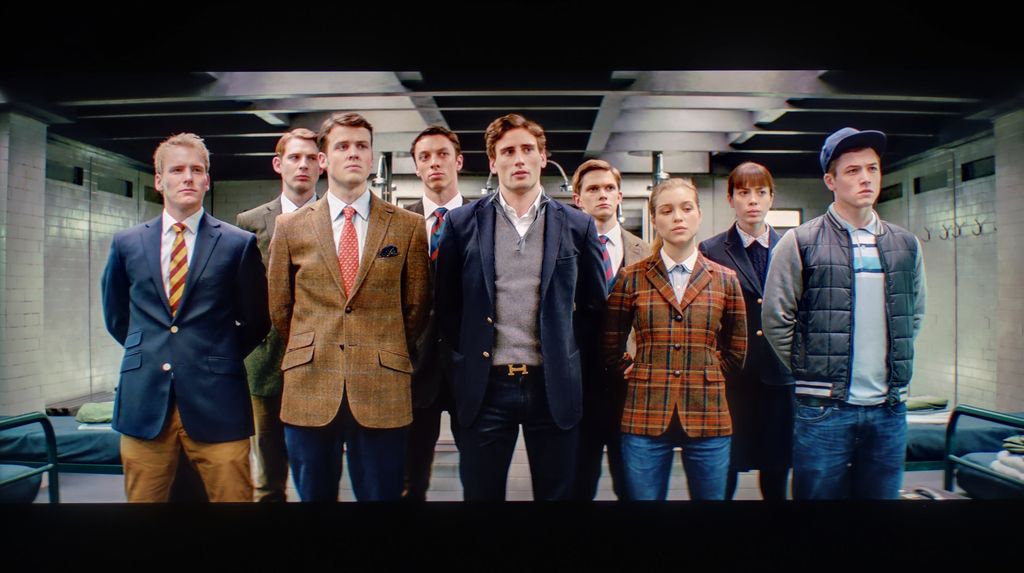

HISENSE 100U7KQ - Smoothness of tonal transitions
10/10
The tonal transitions on the tested television can be described in one word: perfect. Throughout the test sequence, where we played very dark gradients from the most difficult scenes known to us, there was not a hint of stuttering or layers separating from each other. These impressive results attest to the high quality of the panel and advanced image processing algorithms. Of course, the perfect experience is maintained as long as we watch the television head-on – at an angle, dark shades can become significantly pronounced, which is discussed in detail in a dedicated paragraph. It is also worth noting that such a problem can be observed with lower-quality materials, but it is not the fault of the television; rather, it is due to the poorer quality of the source itself.








Image scaling and smoothness of tonal transitions
6/10
Smooth transition function
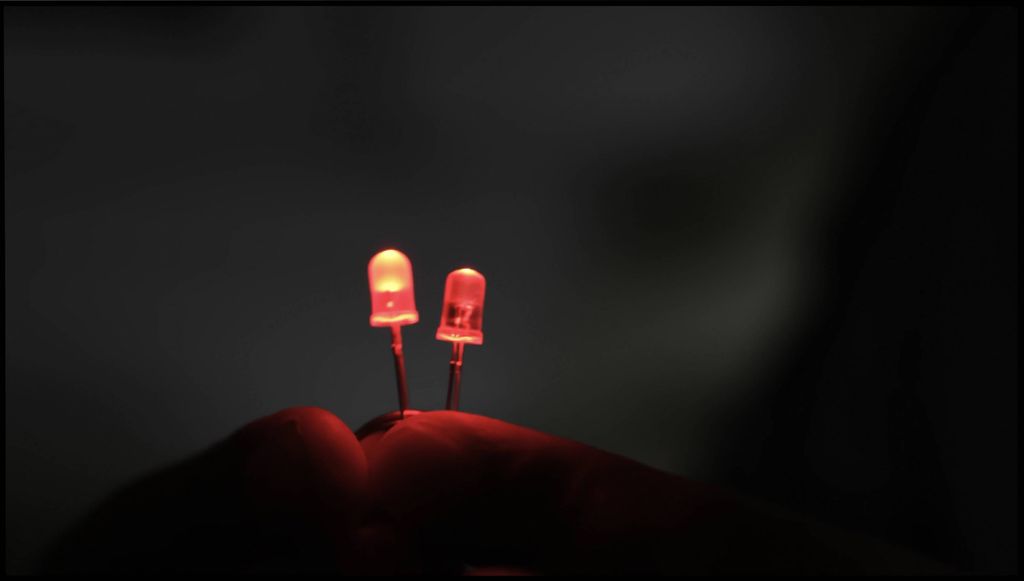
Image without overscan on the SD signal

Although the Hisense 100U7KQ is equipped with a feature to reduce posterisation called "Smooth Gradation," we did not notice a significant effect from its operation. Material subjected to strong compression, such as YouTube videos, still showed uneven, cut-off tonal transitions, which did not look particularly favourable. While this is the fault of the material itself and not the television, it would be beneficial if there were a function to mask these problems, similar to screens from competing brands.
The image scaling, which is crucial when playing lower resolution content, is average. Details are not excessively blurry, and the image is not "smeared," but there is noticeable aliasing on the edges of objects, such as branches, and a halo effect around characters and text. While the television performs fairly well, there is still room for improvement, particularly in the context of displaying lower-quality material.
HISENSE 100U7KQ - Blur and motion smoothness
7/10
Maximum refresh rate of the panel: 240Hz
Film motion smoothing option: Yes
Blur reduction option: Yes
BFI function 60Hz: No
BFI function 120Hz: No
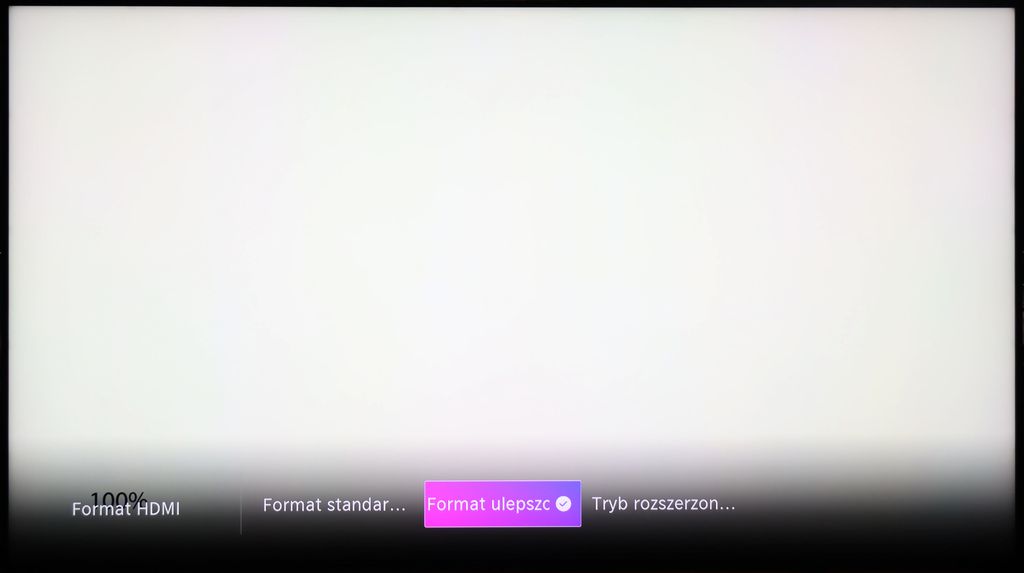
The Hisense 100U7KQ TV correctly receives a 4K signal up to 144 Hz, allowing for very smooth images in high resolution. When the resolution is reduced to Full HD, the TV can handle up to 240 Hz, but this signal can only be obtained from a PC. However, the use of this feature is limited by several factors.
Firstly, Full HD resolution on a large TV screen may feel insufficient, affecting image quality. Additionally, the panel's response time isn't fast enough to fully utilise the 240 Hz refresh rate. As a result, at such a high refresh rate, significant overdrive occurs, leading to noticeable motion blur and "ghosting" behind moving objects.
The motion smoothing feature, which works up to 120 Hz, is also worth noting. This is especially useful for sports and movies where motion fluidity is crucial. The TV provides stable operation of this feature, minimising generated artefacts. Motion fluidity can be adjusted using two sliders – one for smoothness in movies and another for reducing blur in sports content.
In summary, while the Hisense 100U7KQ TV offers impressive image refresh rates, the panel's response time and resolution may affect the overall benefits of these features. Nevertheless, the motion smoothing function enhances the viewing experience of dynamic content.
Blur (native resolution, maximum refresh rate):



HISENSE 100U7KQ - Console compatibility and gaming features
8.5/10
ALLM: Yes
VRR: Yes
VRR range: 48 - 144Hz
Dolby Vision Game Mode: Yes
Correct implementation of HGIG: No
1080p@120Hz: Yes
1440p@120Hz: Yes
4K@120Hz: Yes
Game bar: Yes


The Hisense U7KQ TV supports all the key features when using Xbox or PlayStation consoles, including high refresh rates, low input lag, and a game bar. Most of these features work well, providing a satisfying gaming experience.
However, VRR (Variable Refresh Rate) technology does not perform optimally. When activated, VRR disables the local dimming function, significantly reducing image quality. In VRR mode, the TV struggles with maintaining good contrast and high brightness in HDR, resulting in unsatisfactory image quality. As a result, VRR mode may be infrequently used by gamers due to these limitations.
Additionally, the TV does not support the HGIG (HDR Gaming Interest Group) mode, which optimises HDR image quality in games. Without this mode, tone mapping issues arise in the TV and the console, leading to lower-quality HDR games, which could affect the overall gaming experience.
In summary, while the Hisense U7KQ offers many features for gamers, certain key aspects, such as VRR performance and HGIG support, may not meet the expectations of more demanding users. Nonetheless, the TV supports most standard gaming functions, making it suitable for gamers.



HISENSE 100U7KQ - Input lag
9.8/10
The Hisense U7KQ TV features very low input lag in all picture modes, which is important for gamers who require quick screen response. Regardless of the type of signal – whether it is 4K, Full HD, 60 Hz, or 120 Hz – the delays remain below 20 ms. Such a result is excellent and ensures that even the most demanding gamers will not experience any delays while playing. This makes the TV deserving of the highest rating in terms of gaming performance.
| SDR | HDR | Dolby Vision |
|---|---|---|
| 1080p60: 16 ms | 2160p60: 16 ms | 2160p60 DV: 16 ms |
| 1080p120: 8 ms | 2160p120: 8 ms | 2160p120 DV: 8 ms |
| 2160p60: 16 ms | ||
| 2160p120: 7 ms |

HISENSE 100U7KQ - Compatibility with PC
8/10
Chroma 444 (maximum resolution and refresh rate): Yes
Font clarity: Good
Readability of dark text and shapes: Good
Input lag in PC mode (4K, maximum refresh rate): 16ms
Matrix subpixel arrangement: BGR
Max refresh rate: 240Hz
G-Sync: Yes
The Hisense U7KQ TV works excellently with a PC, thanks to several key features. It supports chroma 4:4:4, ensuring text and graphics are displayed in the highest quality without loss of detail, making it ideal for work or gaming. Additionally, the TV features very low input lag in PC mode, providing minimal delays between actions and the displayed image – essential for gamers needing quick screen response. Despite using a BGR pixel layout instead of the more common RGB, text readability remains good. In summary, the Hisense U7KQ is a versatile choice for PC users, offering excellent support for both work and entertainment.
HISENSE 100U7KQ - Viewing angles
4/10
Brightness drop at an angle of 45 degrees: 71%
The Hisense U7KQ uses a VA-type matrix, which has its limitations regarding viewing angles. Unlike some competing models, it lacks coatings to improve this aspect, meaning image quality significantly degrades when viewed from an angle. Even with a slight deviation from the centre, the contrast deteriorates, and details in dark areas become overly pronounced, while colour saturation drops. These are typical of VA matrices, and the best experience is achieved when sitting directly in front of the screen. This can be a significant limitation for users who plan to watch from various angles, especially for group viewing.
HISENSE 100U7KQ - Daytime performance
7.8/10


Panel finish: Matte
Reflection suppression: Average
Black levels during daytime: Good
The Hisense U7KQ TV is equipped with a satin-coated panel, which offers a middle ground between glossy and matte finishes. While it doesn’t reduce reflections as effectively as matte coatings or retain as deep a black as glossy panels, it can still display some light reflections, especially in brightly lit rooms, affecting viewing comfort. However, the TV's high peak brightness helps to counterbalance this limitation, ensuring the image remains visible even in sunlit rooms. This makes the Hisense U7KQ a solid performer in challenging lighting conditions where other models might struggle.
Panel brightness
Average luminance SDR
Hisense U7KQ: 966 cd/m2
HISENSE 100U7KQ - TV features
8.2/10
System: VIDAA
System performance: Good
- HDMI inputs: 2 x HDMI 2.0, 2 x HDMI 2.1 48Gbps
- Other inputs: RCA (Chinch)
- Outputs: Toslink (Optical audio), eARC (HDMI), ARC (HDMI), Mini-Jack (Headphones)
- Network Interfaces: Wi-Fi 2.4GHz, Ethernet (LAN) 100Mbps
- TV reception: DVB-T, DVB-T2, DVB-S, DVB-S2, DVB-C
Classic features:
Recording to USB (terrestrial TV): Yes
Recording programming: Yes
Picture in Picture (PiP): No
RF remote control (no need to aim at the screen): RF
Backlit remote control: No
Teletext: No
Audio only mode: No
Bluetooth headphones support: Yes
Simultaneous Bluetooth headphones & TV audio: Yes
Smart features:
AirPlay: Yes
Screen mirroring (Windows Miracast): Yes
Voice search: Yes
Voice search in native language: Yes
Ability to connect a keyboard and mouse: Yes




The Hisense U7KQ TV runs on the VIDAA operating system, a proprietary platform by the brand. While it doesn't offer the same broad app selection as Android TV, it has several advantages, including fast and stable performance, ensuring that users experience minimal freezes and quick app loading times.
However, VIDAA does have limitations, notably the absence of popular applications in certain regions. Despite these shortcomings, the system supports key features, such as screen mirroring, voice search in Polish, keyboard and mouse connectivity, and Bluetooth headphones.
Other useful features include the ability to record programs to a USB drive and schedule recordings. However, it lacks specific functions like Teletext and "Audio Only" mode, which would allow for audio playback with the screen turned off.
In summary, while VIDAA may not be as feature-rich as Android TV, it offers solid, reliable performance and supports most essential functions, making it a good choice for users seeking a simple and efficient operating system.
Sound connection options
HDMI audio:
Other audio outputs:
Toslink: Yes
Stereo (Mini-Jack): Yes
Wireless audio:
Bluetooth: Yes
Supported audio formats (external HDMI eARC audio):
Dolby Digital Plus 7.1: Yes
Dolby True HD 7.1: Yes
Dolby Atmos in Dolby Digital Plus (JOC): Yes
Dolby Atmos in Dolby True HD: Yes
DTS:X in DTS-HD MA: Yes
DTS-HD Master Audio: Yes
Senior accessibility
Numeric keyboard on TV: No
Font size adjustment: Yes
Audio description: Yes
HISENSE 100U7KQ - Apps
7.7/10























HISENSE 100U7KQ - Playing files from USB
8.1/10

| Maximum photo resolution: | Supported photo formats: |
|---|---|
The built-in media player on the Hisense U7KQ TV generally performs well with most popular video formats. However, users may occasionally experience issues loading subtitles, which could be frustrating for those who prefer watching films with text.
There are also limitations with less common codecs, such as AV1 and H266. Although these codecs are not yet widely adopted, their lack of support could become an issue as they gain traction. For now, most users are unlikely to notice the absence.
Additionally, some strange behaviour has been observed when displaying photos. Certain image files, particularly those in specific resolutions, may not load properly. This issue could be problematic for users who want to browse their photos directly from a USB drive. As a result, photo viewing on the TV can be limited, with some files potentially failing to load.
In summary, while the media player on the Hisense U7KQ TV works well with most standard video formats, there are some limitations related to subtitle loading and photo display, particularly with certain resolutions. Issues with support for newer codecs are not yet widespread but could become more noticeable.
HISENSE 100U7KQ - Sound
6.9/10
83dB
Maximum volume
Supported codecs
(TV speakers)
Dolby Digital Plus 7.1
Dolby True HD 7.1
Dolby Atmos in Dolby Digital Plus (JOC)
Dolby Atmos in Dolby True HD
DTS:X in DTS-HD MA
DTS-HD Master Audio
The Hisense U7KQ television offers satisfactory sound quality, which is sufficient for most everyday applications. The sound system of this model features good volume and clarity, making dialogues and sound effects clear. However, the television may not provide the full audio experience that can be achieved with dedicated audio systems or soundbars. One of the main audio advantages of the U7KQ is its ability to reproduce sound with minimal distortion at higher volume levels reaching up to 83dB, as well as support for Dolby Atmos and DTS.
Acoustic Measurements
No acoustic data
HISENSE 100U7KQ - Panel details
Software version during testing: V0000.07.50T.N1222
Subpixel Structure:

Backlight Type: PFS LED

Founder and originator of the "ChooseTV" portal

Journalist, reviewer, and columnist for the "ChooseTV" portal
See articles related to Hisense U7KQ:
Our YouTube channel
We are testing the CHEAPEST MiniLED 2025: Hisense U78Q (65” ... 10/23/2025
1/16/2025
1/16/2025
1/15/2025
9/25/2025




